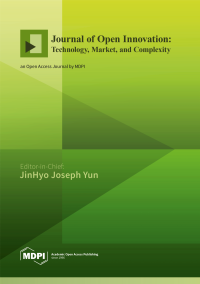Open Innovation in Micro, Small and Medium-Sized Enterprises
A special issue of Journal of Open Innovation: Technology, Market, and Complexity (ISSN 2199-8531).
Deadline for manuscript submissions: closed (15 June 2021) | Viewed by 57300
Special Issue Editors
2. CEG-IST, University of Lisbon, Lisbon, Portugal
Interests: entrepreneurship; innovation; organizational economics; public policy; regional policy
Special Issue Information
Dear Colleagues,
Research defines coopetition as a mix of cooperation and competition among firms oriented towards producing innovation and generating net value added or economic benefit. The importance of studying the determinants of firms’ innovative behavior, based on those coopetition relationships, has warranted increasing attention by scholars. However, the role played by micro, small and medium-sized enterprises in this process has been neglected, even as research on economic geography, clusters, entrepreneurship and innovation has become preeminent. This represents an opportunity for scholars, policy makers, entrepreneurs and practitioners to discuss the importance of micro, small and medium-sized enterprises in determining the innovative behavior of government, industry, higher education institutions (HEIs) and citizens in environments that mix competition and cooperation.
Despite the importance of the institutional and networks approaches explored in the literature, much remains unknown regarding the role played by the referred different types of enterprises in determining innovative and economic performance. Another gap found in the literature is concerning entrepreneurial and open innovative ecosystems. There is an increasing literature suggesting reasons behind ecosystems emergence, but it fails to examine in detail the exact mechanisms behind it, namely, the role played by endogenous production factors (for example, human capital, social or relational capital, organizational capital and knowledge), using an organizational economics approach. This gap may be addressed by linking, for example, coopetition, innovative behaviour, clusters or industrial districts. If agglomeration improves the quality of the match between government, firms, HEIs, and citizens, then clusters will ensure enduring productivity and sustainable competitive advantages.
Dr. João Leitão
Prof. Léo-Paul Dana
Guest Editors
Manuscript Submission Information
Manuscripts should be submitted online at www.mdpi.com by registering and logging in to this website. Once you are registered, click here to go to the submission form. Manuscripts can be submitted until the deadline. All submissions that pass pre-check are peer-reviewed. Accepted papers will be published continuously in the journal (as soon as accepted) and will be listed together on the special issue website. Research articles, review articles as well as short communications are invited. For planned papers, a title and short abstract (about 100 words) can be sent to the Editorial Office for announcement on this website.
Submitted manuscripts should not have been published previously, nor be under consideration for publication elsewhere (except conference proceedings papers). All manuscripts are thoroughly refereed through a single-blind peer-review process. A guide for authors and other relevant information for submission of manuscripts is available on the Instructions for Authors page. Journal of Open Innovation: Technology, Market, and Complexity is an international peer-reviewed open access quarterly journal published by MDPI.
Please visit the Instructions for Authors page before submitting a manuscript. The Article Processing Charge (APC) for publication in this open access journal is 800 CHF (Swiss Francs). Submitted papers should be well formatted and use good English. Authors may use MDPI's English editing service prior to publication or during author revisions.
Keywords
- Coopetition
- Clusters
- Industrial districts
- Innovation
- Micro firms
- Open innovation
- Performance
- SMEs






